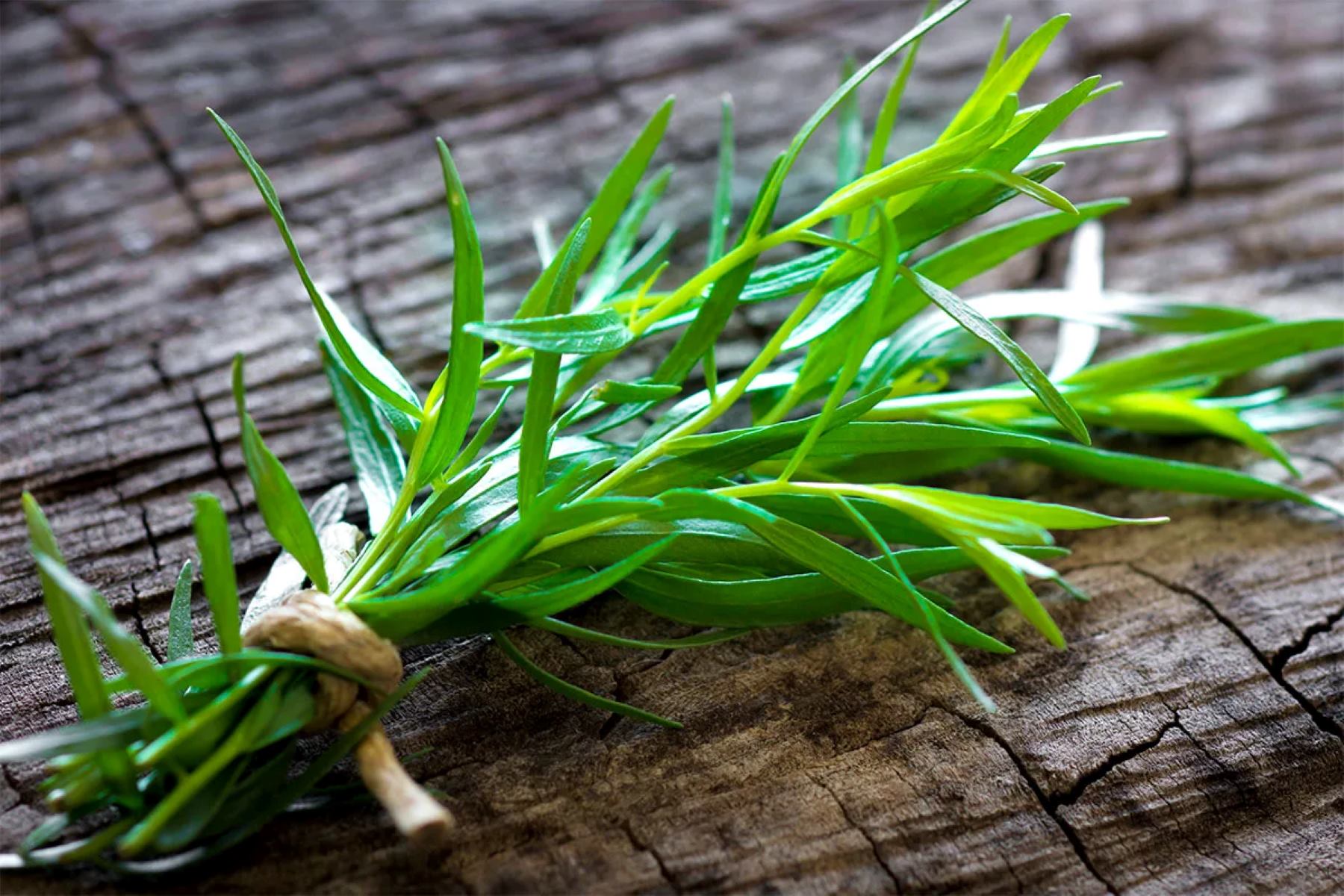Home>Food and Cooking>Top 10 Tantalizing Vegetables That Start With ‘T’!


Food and Cooking
Top 10 Tantalizing Vegetables That Start With ‘T’!
Published: February 1, 2024
Discover the top 10 tantalizing vegetables that start with 'T' and elevate your food and cooking experience with these nutritious and delicious options! Explore recipes and cooking tips now.
(Many of the links in this article redirect to a specific reviewed product. Your purchase of these products through affiliate links helps to generate commission for Regretless.com, at no extra cost. Learn more)
Taro
Taro, also known as Colocasia esculenta, is a starchy root vegetable that has been a dietary staple in various cultures for centuries. It is a tropical plant with broad, heart-shaped leaves and a corm, which is the underground part that is harvested for consumption.
Culinary Uses
Taro is a versatile ingredient that can be prepared in numerous ways. It can be boiled, steamed, roasted, or fried, and its mild, nutty flavor makes it a popular addition to various dishes. In many Asian and Pacific Island cuisines, taro is used to make savory dishes such as stews, curries, and soups. It is also a key ingredient in poi, a traditional Hawaiian dish made by mashing cooked taro corms with water.
Nutritional Benefits
This humble root vegetable is not only delicious but also packed with essential nutrients. Taro is a good source of fiber, vitamins, and minerals, including vitamin E, vitamin B6, potassium, and manganese. It is also naturally gluten-free, making it a suitable option for individuals with gluten sensitivities or celiac disease.
Health Considerations
While taro offers numerous health benefits, it's important to note that it contains oxalates, which can be harmful if consumed in large quantities. Oxalates can contribute to the formation of kidney stones in some individuals. Therefore, moderation is key when incorporating taro into your diet.
Culinary Inspiration
For a delightful culinary experience, consider trying taro chips, which are thinly sliced taro roots that are fried to crispy perfection and seasoned with various spices. Additionally, taro can be used to create delectable desserts, such as taro ice cream or taro-flavored mochi. Its unique texture and flavor add an intriguing twist to both sweet and savory dishes, making it a cherished ingredient in the culinary world.
Embracing Taro
Whether you're a seasoned chef or an adventurous home cook, exploring the culinary possibilities of taro can lead to delightful discoveries. Its rich history, nutritional benefits, and culinary versatility make it a vegetable worth embracing in your kitchen. From comforting stews to innovative desserts, taro has the potential to elevate your culinary creations and introduce you to a world of tantalizing flavors.
Tomatillo
Tomatillo, also known as Physalis philadelphica, is a small, green fruit encased in a papery husk. Despite its name, tomatillo is not a type of tomato but rather a member of the nightshade family, related to tomatoes and peppers. Native to Mexico, tomatillos have been a staple in Mexican cuisine for centuries and are prized for their tangy flavor and versatility in various dishes.
Culinary Uses
Tomatillos are a key ingredient in Mexican cuisine, particularly in the creation of salsa verde, a vibrant and zesty green sauce. To prepare salsa verde, tomatillos are typically roasted or boiled to mellow their tartness, then blended with ingredients such as onions, cilantro, chili peppers, and lime juice to create a flavorful and aromatic sauce that pairs beautifully with tacos, enchiladas, and grilled meats.
Beyond salsa verde, tomatillos can be used in a myriad of culinary applications. They can be sliced and added to salads for a refreshing crunch, incorporated into soups and stews for a tangy kick, or even pickled to preserve their unique flavor. Additionally, tomatillos can be grilled and pureed to make a delectable base for marinades, adding depth and complexity to grilled dishes.
Nutritional Benefits
Tomatillos are not only prized for their culinary versatility but also for their nutritional benefits. They are low in calories and rich in dietary fiber, which supports digestive health and helps maintain a feeling of fullness. Furthermore, tomatillos are a good source of essential nutrients, including vitamin C, vitamin K, and niacin, which contribute to overall well-being and immune function.
Culinary Inspiration
For a delightful culinary adventure, consider exploring the vibrant world of tomatillos by experimenting with different recipes and flavor combinations. Embrace the tangy and slightly acidic nature of tomatillos by incorporating them into homemade salsas, chutneys, and relishes. Their bright, citrusy flavor can enliven dishes and add a refreshing twist to traditional recipes.
Moreover, tomatillos can be used to create unique and flavorful sauces for enchiladas, tamales, and grilled seafood, infusing dishes with a tantalizing depth of flavor. Whether you're a seasoned cook or a culinary enthusiast, tomatillos offer endless opportunities for culinary creativity and exploration.
Embracing Tomatillos
From their vibrant green hue to their tangy, citrus-like flavor, tomatillos have the potential to elevate your culinary creations and introduce you to a world of tantalizing flavors. Whether you're crafting a zesty salsa verde or experimenting with innovative marinades, tomatillos are a versatile ingredient that can spark culinary inspiration and delight the taste buds with their unique and refreshing taste. Embrace the culinary enchantment of tomatillos and savor the vibrant flavors they bring to your kitchen.
Turnip
The turnip, scientifically known as Brassica rapa subsp. rapa, is a versatile and nutritious root vegetable that has been cherished for centuries in culinary traditions around the world. With its distinctively earthy flavor and crisp texture, the turnip offers a delightful addition to a wide array of dishes, from comforting stews to vibrant salads.
Culinary Uses
Turnips are prized for their culinary versatility, as they can be enjoyed in both raw and cooked forms. When raw, turnips add a refreshing crunch to salads and slaws, contributing a mild peppery flavor that complements a variety of ingredients. Additionally, turnips can be pickled to create tangy and vibrant pickles that serve as a delightful accompaniment to sandwiches and charcuterie boards.
In cooked preparations, turnips shine in an assortment of dishes, such as hearty soups, savory stews, and roasted vegetable medleys. When cooked, turnips develop a sweet and mellow flavor, making them a delightful addition to braises and roasts. Furthermore, turnips can be mashed or pureed to create creamy and flavorful side dishes that offer a unique twist on traditional mashed potatoes.
Nutritional Benefits
Beyond their culinary appeal, turnips boast an impressive nutritional profile. They are rich in essential nutrients, including vitamin C, vitamin K, and fiber, all of which contribute to overall well-being and health. Additionally, turnips are low in calories and carbohydrates, making them a favorable choice for individuals seeking to incorporate nutrient-dense foods into their diet.
Culinary Inspiration
For those seeking culinary inspiration, turnips present an opportunity to explore innovative and flavorful recipes. Consider incorporating turnips into hearty vegetable soups, where their robust flavor can add depth and complexity to the broth. Roasting turnips alongside other root vegetables, such as carrots and parsnips, can create a medley of caramelized flavors that elevate any meal.
Furthermore, embracing turnips in their raw form opens the door to creative salads and appetizers. Thinly sliced turnips can be layered in salads for a crisp and refreshing element, while their natural peppery notes provide a delightful contrast to leafy greens and vinaigrettes. Embracing turnips in both cooked and raw applications allows for a diverse and engaging culinary experience.
Embracing Turnips
From their earthy flavor to their culinary adaptability, turnips offer a spectrum of possibilities for culinary exploration. Whether incorporated into comforting winter dishes or featured in vibrant spring salads, turnips have the potential to captivate the palate with their unique flavor and texture. Embrace the culinary enchantment of turnips and savor the creative opportunities they bring to the kitchen.
Tatsoi
Tatsoi, also known as Brassica rapa subsp. narinosa, is a leafy green vegetable that hails from Asia, where it has been cherished for its delicate flavor and nutritional benefits. This versatile green, with its spoon-shaped leaves and tender stems, offers a delightful addition to a wide range of culinary creations.
Culinary Uses
Tatsoi's mild and slightly peppery flavor makes it a versatile ingredient in various culinary applications. Whether enjoyed raw in salads or cooked in stir-fries and soups, tatsoi adds a delightful depth of flavor and vibrant green color to dishes. When consumed raw, its tender leaves and stems contribute a pleasant crunch and a hint of mustard-like zest to salads and slaws. Moreover, tatsoi's robust nature allows it to withstand heat, making it an excellent choice for quick stir-fries and sautés. When cooked, tatsoi softens slightly while retaining its distinct flavor, adding a delightful textural contrast to dishes.
Nutritional Benefits
In addition to its culinary appeal, tatsoi offers an array of nutritional benefits. This leafy green is a rich source of vitamins and minerals, including vitamin C, vitamin K, calcium, and folate. Its nutrient-dense profile makes it a valuable addition to a balanced diet, supporting overall well-being and health. Furthermore, tatsoi is low in calories and carbohydrates, making it an excellent choice for individuals seeking to incorporate nutrient-dense and low-calorie foods into their meals.
Culinary Inspiration
For those seeking culinary inspiration, tatsoi presents an opportunity to explore innovative and flavorful recipes. Consider incorporating tatsoi into vibrant stir-fries, where its tender leaves and stems can absorb the flavors of aromatic sauces and seasonings, creating a harmonious blend of textures and tastes. Additionally, tatsoi can be used to enhance the nutritional value of soups and broths, adding a pop of color and a nutrient boost to comforting bowls of warmth.
Furthermore, embracing tatsoi in its raw form offers the chance to create visually stunning salads and appetizers. Its vibrant green leaves can serve as a canvas for culinary creativity, providing a refreshing and nutritious element to salads and vegetable platters. Whether used as a primary ingredient or as a flavorful accent, tatsoi invites culinary experimentation and exploration.
Embracing Tatsoi
From its delicate flavor to its culinary adaptability, tatsoi offers a spectrum of possibilities for culinary exploration. Whether incorporated into vibrant stir-fries or featured in refreshing salads, tatsoi has the potential to captivate the palate with its unique flavor and nutritional benefits. Embrace the culinary enchantment of tatsoi and savor the creative opportunities it brings to the kitchen.
Read more: Top Cities That Start With The Letter “D”
Tinda
Tinda, also known as Indian round gourd or apple gourd, is a beloved vegetable in Indian cuisine, prized for its delicate flavor and versatile culinary applications. This small, round vegetable belongs to the gourd family and is characterized by its pale green skin and tender flesh. With its mild taste and tender texture, tinda has become a staple ingredient in a variety of traditional Indian dishes, offering a delightful addition to curries, stir-fries, and stews.
Culinary enthusiasts and home cooks alike appreciate the ease of preparation and the delightful flavor that tinda brings to the table. When cooked, tinda develops a soft and buttery texture, making it an excellent addition to vegetarian and non-vegetarian curries. Its ability to absorb aromatic spices and seasonings allows tinda to contribute a delightful depth of flavor to dishes, creating a harmonious blend of tastes and textures.
In Indian households, tinda is often featured in recipes that showcase its versatility, such as "Tinda Masala" and "Stuffed Tinda." In the popular dish "Tinda Masala," the gourds are gently cooked in a flavorful tomato-based gravy, allowing them to soak up the rich and aromatic spices, resulting in a dish that is both comforting and satisfying. Additionally, "Stuffed Tinda" presents an innovative way to enjoy this humble vegetable, as it is filled with a savory mixture of spices, herbs, and sometimes paneer, creating a delightful interplay of flavors and textures.
Beyond its culinary appeal, tinda offers nutritional benefits that make it a valuable addition to a balanced diet. It is low in calories and rich in dietary fiber, making it a favorable choice for individuals seeking to incorporate nutrient-dense foods into their meals. Furthermore, tinda is a good source of essential vitamins and minerals, including vitamin C, vitamin A, and potassium, which contribute to overall well-being and health.
For those seeking culinary inspiration, tinda presents an opportunity to explore the vibrant and diverse world of Indian cuisine. Whether incorporated into traditional curries or featured in innovative recipes, tinda has the potential to captivate the palate with its unique flavor and culinary versatility. Embrace the culinary enchantment of tinda and savor the creative opportunities it brings to the kitchen.
Tepary Bean
The tepary bean, scientifically known as Phaseolus acutifolius, is a resilient and nutritious legume that has been cultivated by indigenous peoples in the arid regions of the southwestern United States and Mexico for centuries. This humble yet remarkable bean thrives in harsh desert conditions, displaying a remarkable ability to withstand drought, heat, and low soil fertility. Its adaptability and nutritional richness have positioned it as a valuable staple in traditional diets and a source of sustenance for generations.
Culinary Versatility
The tepary bean offers a spectrum of culinary possibilities, from hearty stews and soups to flavorful salads and spreads. When cooked, tepary beans develop a creamy texture and a nutty, earthy flavor that adds depth to a wide array of dishes. In traditional Native American cuisine, tepary beans are often featured in savory stews, where their robust flavor and substantial texture provide a satisfying and nourishing element. Furthermore, tepary beans can be sprouted and used in salads, adding a delightful crunch and a nutritional boost to fresh and vibrant dishes.
Nutritional Richness
Beyond its culinary appeal, the tepary bean boasts an impressive nutritional profile, making it a valuable addition to a balanced diet. It is rich in protein, dietary fiber, and essential nutrients, including iron, magnesium, and potassium. Its low glycemic index and high fiber content contribute to stable blood sugar levels and sustained energy, making it a favorable choice for individuals seeking to incorporate nutrient-dense foods into their meals. Additionally, tepary beans are naturally gluten-free, offering a suitable option for individuals with gluten sensitivities or celiac disease.
Cultivating Sustainability
The cultivation of tepary beans aligns with principles of sustainability and environmental resilience. Their ability to thrive in arid environments with minimal water requirements makes them a valuable crop in regions facing water scarcity and climate challenges. Furthermore, their nitrogen-fixing properties contribute to soil health and fertility, supporting agroecological practices and enhancing the resilience of agricultural ecosystems.
Embracing Tepary Beans
From their culinary adaptability to their nutritional richness and environmental sustainability, tepary beans offer a wealth of opportunities for culinary exploration and agricultural resilience. Whether incorporated into traditional stews or featured in innovative plant-based recipes, tepary beans have the potential to captivate the palate with their unique flavor and nourishing qualities. Embrace the culinary and agricultural enchantment of tepary beans and savor the creative opportunities they bring to the kitchen and the landscape.
Tamarillo
Tamarillo, also known as the tree tomato, is a unique and vibrant fruit that hails from the Andes region of South America. With its egg-shaped form and glossy, deep red or golden skin, the tamarillo is a striking addition to the world of exotic fruits. While often referred to as a tomato due to its appearance, the tamarillo is not botanically related to the common tomato but is, in fact, a member of the Solanaceae family, which also includes eggplants and chili peppers.
Culinary enthusiasts and adventurous cooks are drawn to the tamarillo for its intriguing flavor profile, which is often described as a harmonious blend of sweet and tangy notes, with a hint of earthiness. The flesh of the tamarillo is succulent and rich, offering a delightful contrast to its slightly tart and aromatic skin. When ripe, the flesh of the tamarillo can range from vibrant orange to deep crimson, presenting a visual feast for the senses.
The culinary uses of tamarillo are as diverse as its flavor palette. In its raw form, tamarillo can be sliced and added to fruit salads, providing a burst of refreshing sweetness and a visually stunning element. Furthermore, tamarillo can be transformed into vibrant chutneys and preserves, where its complex flavor shines alongside aromatic spices and sweeteners, creating a delightful accompaniment to cheeses and roasted meats.
Beyond its applications in sweet dishes, tamarillo lends itself to savory preparations, adding depth and complexity to sauces and marinades. In South American and New Zealand cuisines, tamarillo is often used to create tangy and robust sauces that complement grilled meats and seafood, infusing dishes with a captivating blend of sweet and acidic flavors.
Nutritionally, tamarillo offers a range of benefits, as it is rich in essential vitamins and minerals. It is a good source of vitamin C, vitamin A, and potassium, contributing to overall well-being and immune function. Additionally, tamarillo is low in calories and high in dietary fiber, making it a favorable choice for individuals seeking to incorporate nutrient-dense and low-calorie foods into their diet.
In the realm of culinary creativity, tamarillo presents an opportunity for exploration and innovation. Whether featured in vibrant salsas, decadent desserts, or savory glazes, tamarillo has the potential to captivate the palate with its unique flavor and visual appeal. Embrace the culinary enchantment of tamarillo and savor the creative opportunities it brings to the kitchen.
Tromboncino
Tromboncino, also known as Tromboncino squash or Zucchetta, is a distinctive and versatile member of the Cucurbitaceae family, renowned for its elongated, curvaceous shape and delicate flavor. Originating from Italy, this heirloom squash has gained popularity among culinary enthusiasts and gardeners for its culinary adaptability and ornamental appeal.
The unique shape of the tromboncino sets it apart from traditional summer squashes, as it resembles a winding, pale green trumpet, often growing to impressive lengths. Its tender flesh and mild, nutty flavor make it a delightful addition to a wide array of dishes, from sautés and stir-fries to soups and casseroles. When harvested young, tromboncino squash can be enjoyed with its skin on, adding a vibrant hue and a crisp texture to culinary creations. As it matures, the flesh becomes denser and can be used in gratins, fritters, and even baked goods, offering a versatile canvas for culinary experimentation.
In addition to its culinary appeal, tromboncino squash is valued for its adaptability in various growing conditions, making it a favored choice for home gardeners and small-scale farmers. Its vigorous vines and prolific fruiting make it a resilient and rewarding crop, thriving in diverse climates and soil types. Furthermore, the ornamental quality of tromboncino squash adds a touch of whimsy to garden landscapes, as its winding tendrils and striking fruits create a visually captivating display.
From a nutritional standpoint, tromboncino squash offers an array of health benefits, as it is low in calories and rich in essential nutrients. It is a good source of dietary fiber, vitamins A and C, and minerals such as potassium and manganese, contributing to overall well-being and vitality. Its versatile culinary applications and nutritional richness position it as a valuable addition to a balanced and health-conscious diet.
Embracing tromboncino squash in the kitchen presents an opportunity for culinary exploration and creativity. Whether incorporated into vibrant vegetable medleys, roasted to caramelized perfection, or spiralized into innovative pasta alternatives, tromboncino squash has the potential to captivate the palate with its unique shape, flavor, and culinary adaptability. Embrace the culinary enchantment of tromboncino and savor the creative opportunities it brings to the kitchen.
Read more: 10 Amazing Positive Words That Start With A
Tindora
Tindora, also known as ivy gourd or scarlet gourd, is a versatile and beloved vegetable in South Asian and Southeast Asian cuisines, prized for its delicate flavor and culinary adaptability. This small, elongated vegetable, characterized by its vibrant green hue and tender, slightly crunchy texture, has become a staple ingredient in a variety of traditional dishes, offering a delightful addition to curries, stir-fries, and pickles.
Culinary enthusiasts and home cooks appreciate the ease of preparation and the delightful flavor that tindora brings to the table. When cooked, tindora develops a tender yet slightly crisp texture, making it an excellent addition to vegetable stir-fries and curries. Its ability to absorb aromatic spices and seasonings allows tindora to contribute a delightful depth of flavor to dishes, creating a harmonious blend of tastes and textures.
In South Asian and Southeast Asian households, tindora is often featured in recipes that showcase its versatility, such as "Tindora Sabzi" and "Tindora Pickle." In the popular dish "Tindora Sabzi," the gourds are gently cooked with a medley of spices and herbs, resulting in a dish that is both comforting and satisfying. Additionally, "Tindora Pickle" presents an innovative way to enjoy this humble vegetable, as it is pickled with a flavorful blend of spices, creating a delightful accompaniment to rice dishes and flatbreads.
Beyond its culinary appeal, tindora offers nutritional benefits that make it a valuable addition to a balanced diet. It is low in calories and rich in dietary fiber, making it a favorable choice for individuals seeking to incorporate nutrient-dense foods into their meals. Furthermore, tindora is a good source of essential vitamins and minerals, including vitamin C, vitamin A, and potassium, which contribute to overall well-being and health.
For those seeking culinary inspiration, tindora presents an opportunity to explore the vibrant and diverse world of South Asian and Southeast Asian cuisine. Whether incorporated into traditional curries or featured in innovative recipes, tindora has the potential to captivate the palate with its unique flavor and culinary versatility. Embrace the culinary enchantment of tindora and savor the creative opportunities it brings to the kitchen.
Tepary Bean
The tepary bean, scientifically known as Phaseolus acutifolius, is a resilient and nutritious legume that has been cultivated by indigenous peoples in the arid regions of the southwestern United States and Mexico for centuries. This humble yet remarkable bean thrives in harsh desert conditions, displaying a remarkable ability to withstand drought, heat, and low soil fertility. Its adaptability and nutritional richness have positioned it as a valuable staple in traditional diets and a source of sustenance for generations.
Culinary Versatility
The tepary bean offers a spectrum of culinary possibilities, from hearty stews and soups to flavorful salads and spreads. When cooked, tepary beans develop a creamy texture and a nutty, earthy flavor that adds depth to a wide array of dishes. In traditional Native American cuisine, tepary beans are often featured in savory stews, where their robust flavor and substantial texture provide a satisfying and nourishing element. Furthermore, tepary beans can be sprouted and used in salads, adding a delightful crunch and a nutritional boost to fresh and vibrant dishes.
Nutritional Richness
Beyond its culinary appeal, the tepary bean boasts an impressive nutritional profile, making it a valuable addition to a balanced diet. It is rich in protein, dietary fiber, and essential nutrients, including iron, magnesium, and potassium. Its low glycemic index and high fiber content contribute to stable blood sugar levels and sustained energy, making it a favorable choice for individuals seeking to incorporate nutrient-dense foods into their meals. Additionally, tepary beans are naturally gluten-free, offering a suitable option for individuals with gluten sensitivities or celiac disease.
Cultivating Sustainability
The cultivation of tepary beans aligns with principles of sustainability and environmental resilience. Their ability to thrive in arid environments with minimal water requirements makes them a valuable crop in regions facing water scarcity and climate challenges. Furthermore, their nitrogen-fixing properties contribute to soil health and fertility, supporting agroecological practices and enhancing the resilience of agricultural ecosystems.
Embracing Tepary Beans
From their culinary adaptability to their nutritional richness and environmental sustainability, tepary beans offer a wealth of opportunities for culinary exploration and agricultural resilience. Whether incorporated into traditional stews or featured in innovative plant-based recipes, tepary beans have the potential to captivate the palate with their unique flavor and nourishing qualities. Embrace the culinary and agricultural enchantment of tepary beans and savor the creative opportunities they bring to the kitchen and the landscape.








